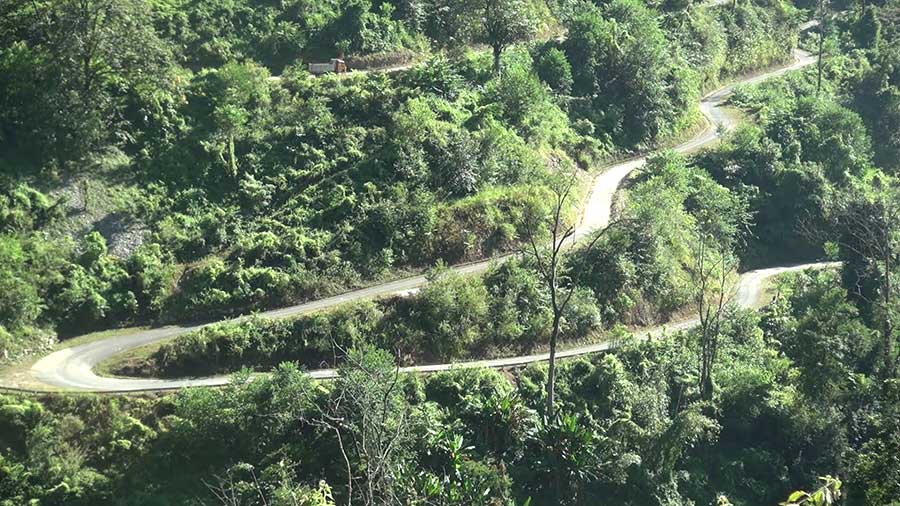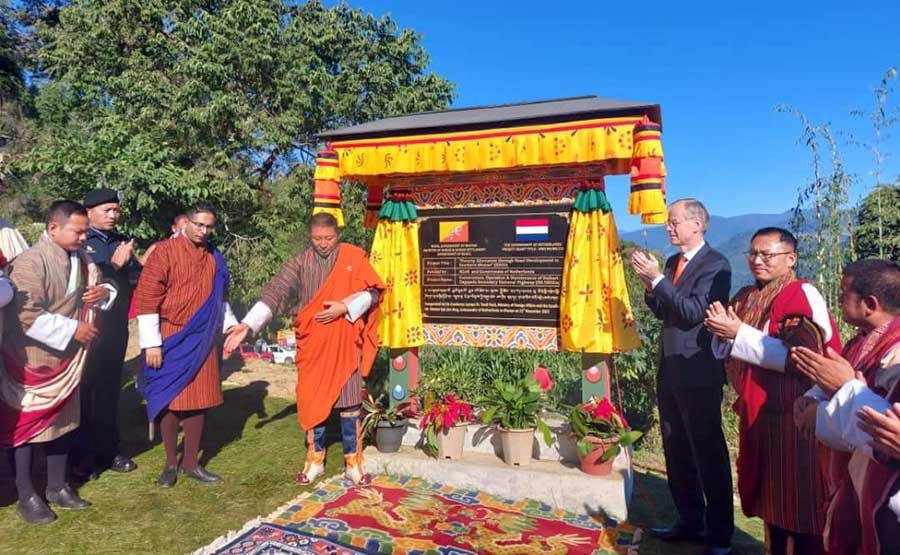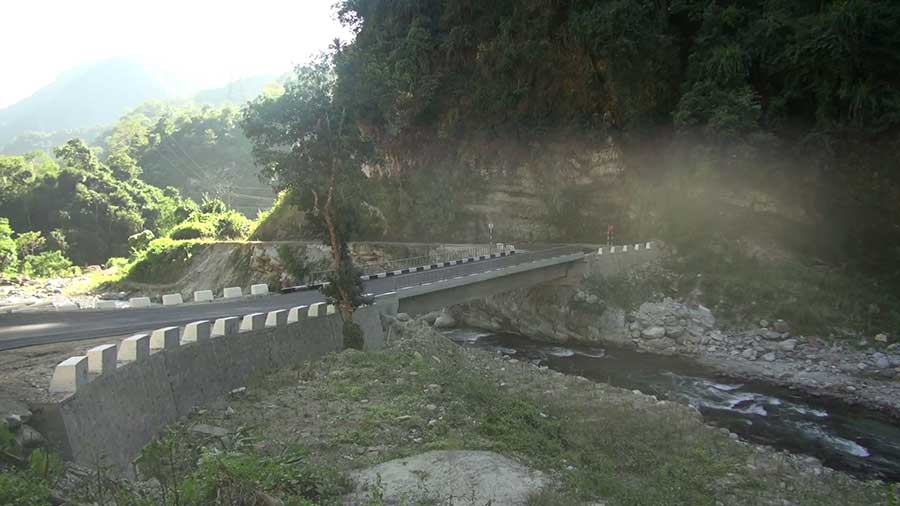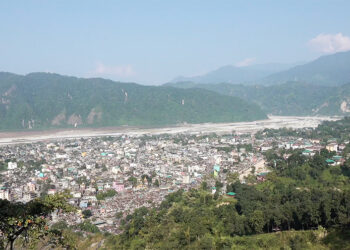
The Dagapela-Dalbari secondary national highway is finally inaugurated and opened to traffic today. The construction of the more than 80-kilometre highway took eight years to complete. It was supposed to complete in 2017, however, several issues like retendering of work and termination of contracts caused the delay.
 Foreign Minister Dr Tandi Dorji and the Netherlands Ambassador to Bhutan, Martin Van Den Berg inaugurated the new highway. It has reduced the travel time for people of the upper 11 gewogs of Dagana while visiting Lhamoi Dzingkha and Phuentshogling. Earlier, it used to take a whole day to reach Lhamoi Dzingkha Dungkhag from Dagapela since they had to travel via Thimphu or Gelephu. But now, it is just a matter of about two hours. Besides, the highway will bring Phuentshogling much closer to nearby districts like Tsirang, Wangdue Phodrang, and some parts of Sarpang and Trongsa.
Foreign Minister Dr Tandi Dorji and the Netherlands Ambassador to Bhutan, Martin Van Den Berg inaugurated the new highway. It has reduced the travel time for people of the upper 11 gewogs of Dagana while visiting Lhamoi Dzingkha and Phuentshogling. Earlier, it used to take a whole day to reach Lhamoi Dzingkha Dungkhag from Dagapela since they had to travel via Thimphu or Gelephu. But now, it is just a matter of about two hours. Besides, the highway will bring Phuentshogling much closer to nearby districts like Tsirang, Wangdue Phodrang, and some parts of Sarpang and Trongsa.
“Samarchhu chiwog of my gewog shares border with Karmaling Gewog of Lhamoi Dzingkha Dungkhag. It used to take three days just to conduct a public meeting. But now, it takes only a day because it takes only two hours to reach via the new highway,” said Bal Bdr. Rana, the Tsendagang Gup.
 The highway passes through Gozhi, Tsendagang, Gesarling, Dorona and Karmaling gewogs of Dagana and is expected to boost economic opportunities for more than 500 households in the gewogs. It opens a new trade route for farmers of Lhamoi Dzingkha Dungkhag.
The highway passes through Gozhi, Tsendagang, Gesarling, Dorona and Karmaling gewogs of Dagana and is expected to boost economic opportunities for more than 500 households in the gewogs. It opens a new trade route for farmers of Lhamoi Dzingkha Dungkhag.
“Now people of three gewogs under Lhamoi Dzingkha can even market their farm produces here in Dagapela and take it to Thimphu. It will take about six hours to reach Thimphu even if they take farm produce via Wangdue Phodrang,” the Gup added.
Tourists are also expected to come in through this route if Lhamoi Dzingkha becomes one of the entry and exit points for tourism. According to Foreign Minister Dr Tandi Dorji, talks with the government of India are underway to recognise Lhamoi Dzingkha along with Nganglam and Panbang as exit and entry points.
“Once these sites are notified as exit and entry for tourists, then there will be enhanced goods and trade but there will be also lots of tourists,” Lyonpo said during the inauguration.
The government of the Netherlands financed 50 per cent of the 1.5 billion ngultrum project.
“The Netherlands and Bhutan share a very warm relationship in many ways. We started to develop collaborations in 1976 and that relationship has resulted in this project which illustrates that we will continue our bilateral collaborations in many ways to work on with you on development to Bhutan,” said Ambassador of the Netherlands to Bhutan Marten Van Den Berg.
The Works and Human Settlement Ministry initially started executing the highway construction works in 2014. The project went on to miss several deadlines. According to project officials, the steep rocky terrain, deep gorges and erratic and heavy monsoon have hampered the timely completion of the project. In the later phase, the pandemic also affected the project in mobilizing manpower, machinery and materials.
Pema Tshewang, Dagana
Edited by Sonam








